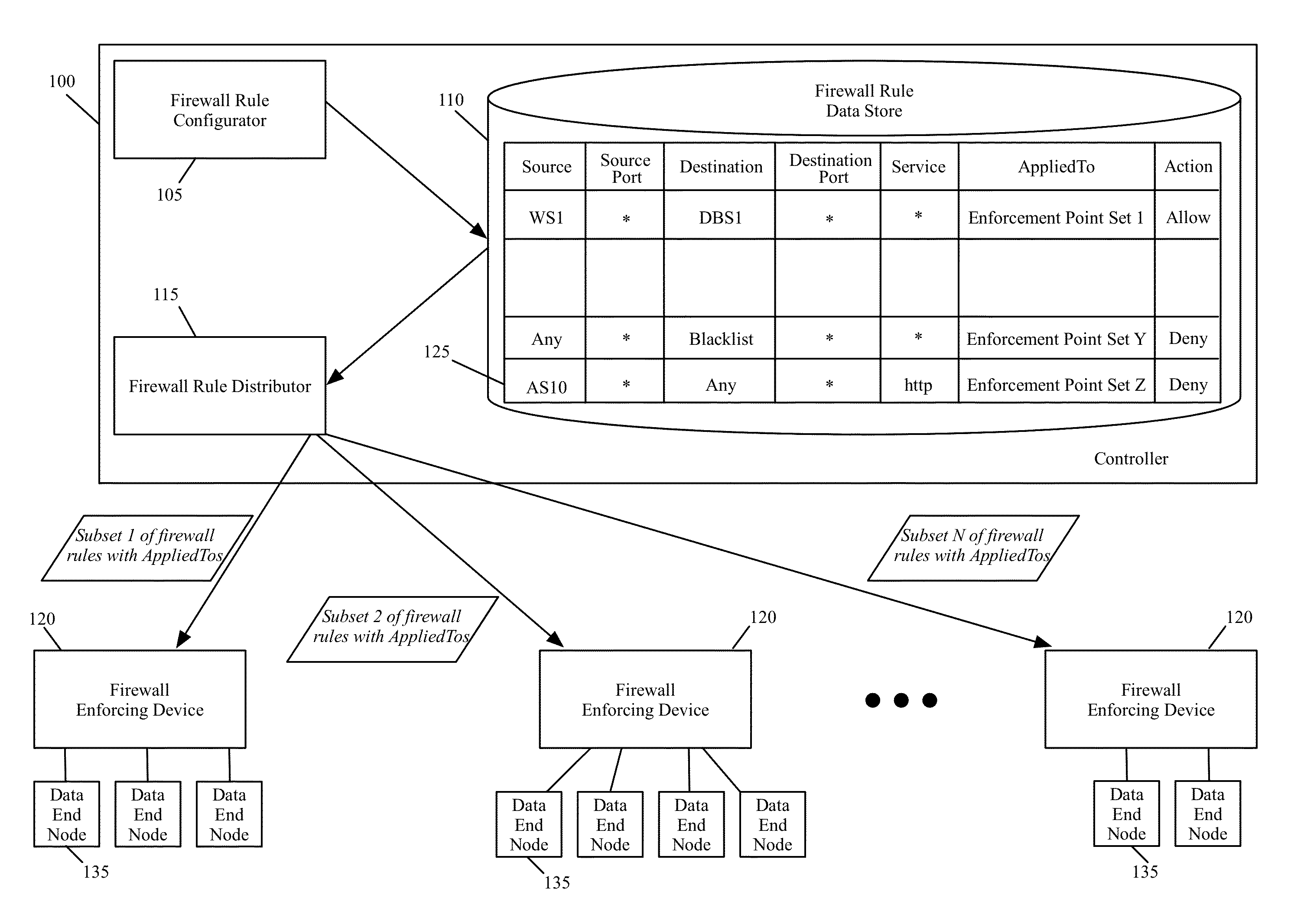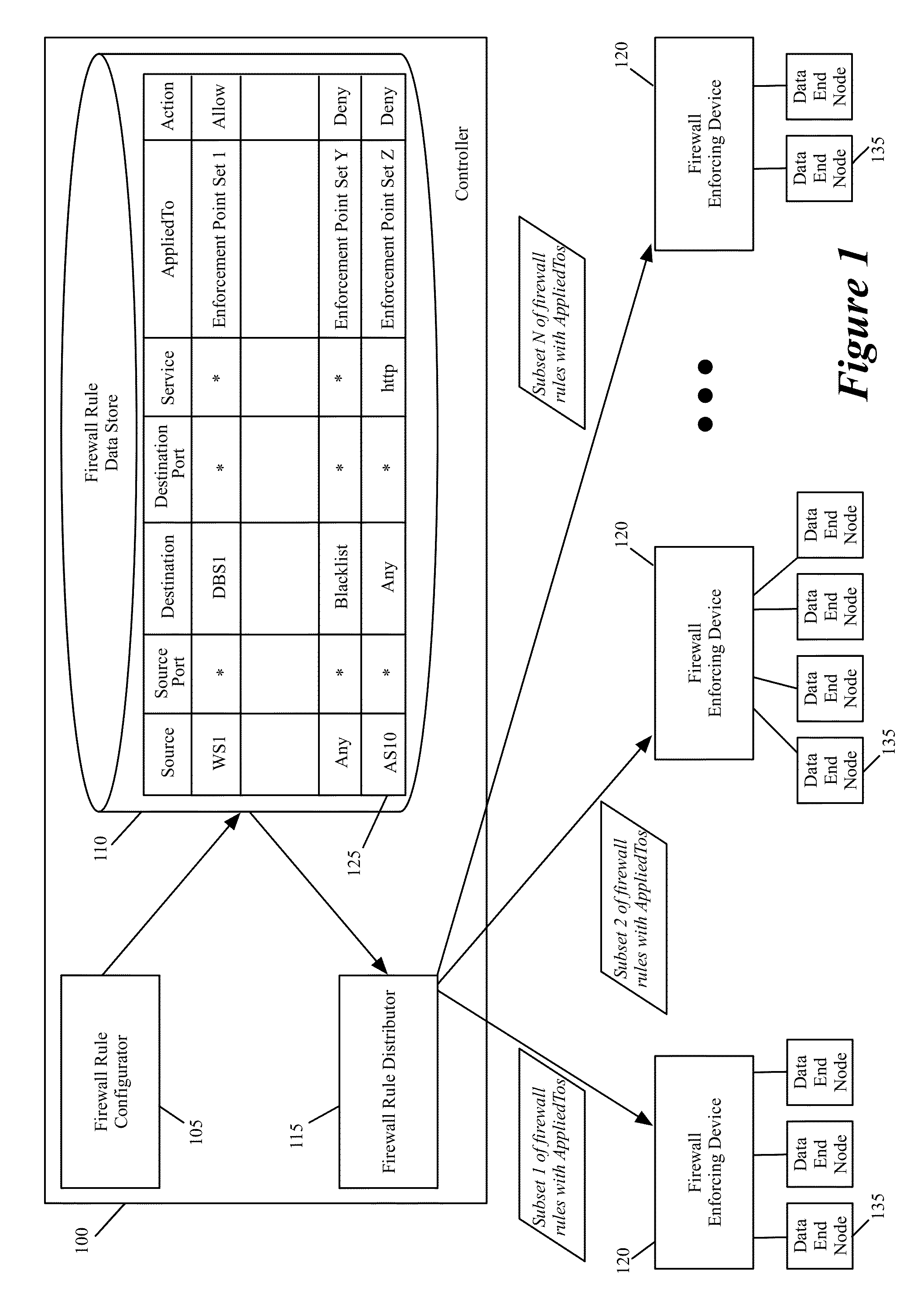Method and apparatus for distributing firewall rules
a firewall and rule technology, applied in the field of firewall rules, can solve the problems of failing to provide security among the machines behind the choke point, and reducing the processing speed of the firewall engine, so as to achieve faster search speed, faster processing, and small size
- Summary
- Abstract
- Description
- Claims
- Application Information
AI Technical Summary
Benefits of technology
Problems solved by technology
Method used
Image
Examples
Embodiment Construction
[0027]In the following detailed description of the invention, numerous details, examples, and embodiments of the invention are set forth and described. However, it will be clear and apparent to one skilled in the art that the invention is not limited to the embodiments set forth and that the invention may be practiced without some of the specific details and examples discussed.
[0028]Some embodiments of the invention provide a novel method for specifying firewall rules. In some embodiments, the method provides the ability to specify for a particular firewall rule, a set of network node locations (called a set of enforcement points below) at which the particular firewall should be enforced. To provide this ability, the method of some embodiments adds an extra tuple (referred to below as the AppliedTo tuple) to a firewall rule. This added AppliedTo tuple lists the set of enforcement points at which the firewall rule has to be applied (i.e., enforced).
[0029]FIG. 1 illustrates a controll...
PUM
 Login to View More
Login to View More Abstract
Description
Claims
Application Information
 Login to View More
Login to View More - R&D
- Intellectual Property
- Life Sciences
- Materials
- Tech Scout
- Unparalleled Data Quality
- Higher Quality Content
- 60% Fewer Hallucinations
Browse by: Latest US Patents, China's latest patents, Technical Efficacy Thesaurus, Application Domain, Technology Topic, Popular Technical Reports.
© 2025 PatSnap. All rights reserved.Legal|Privacy policy|Modern Slavery Act Transparency Statement|Sitemap|About US| Contact US: help@patsnap.com



